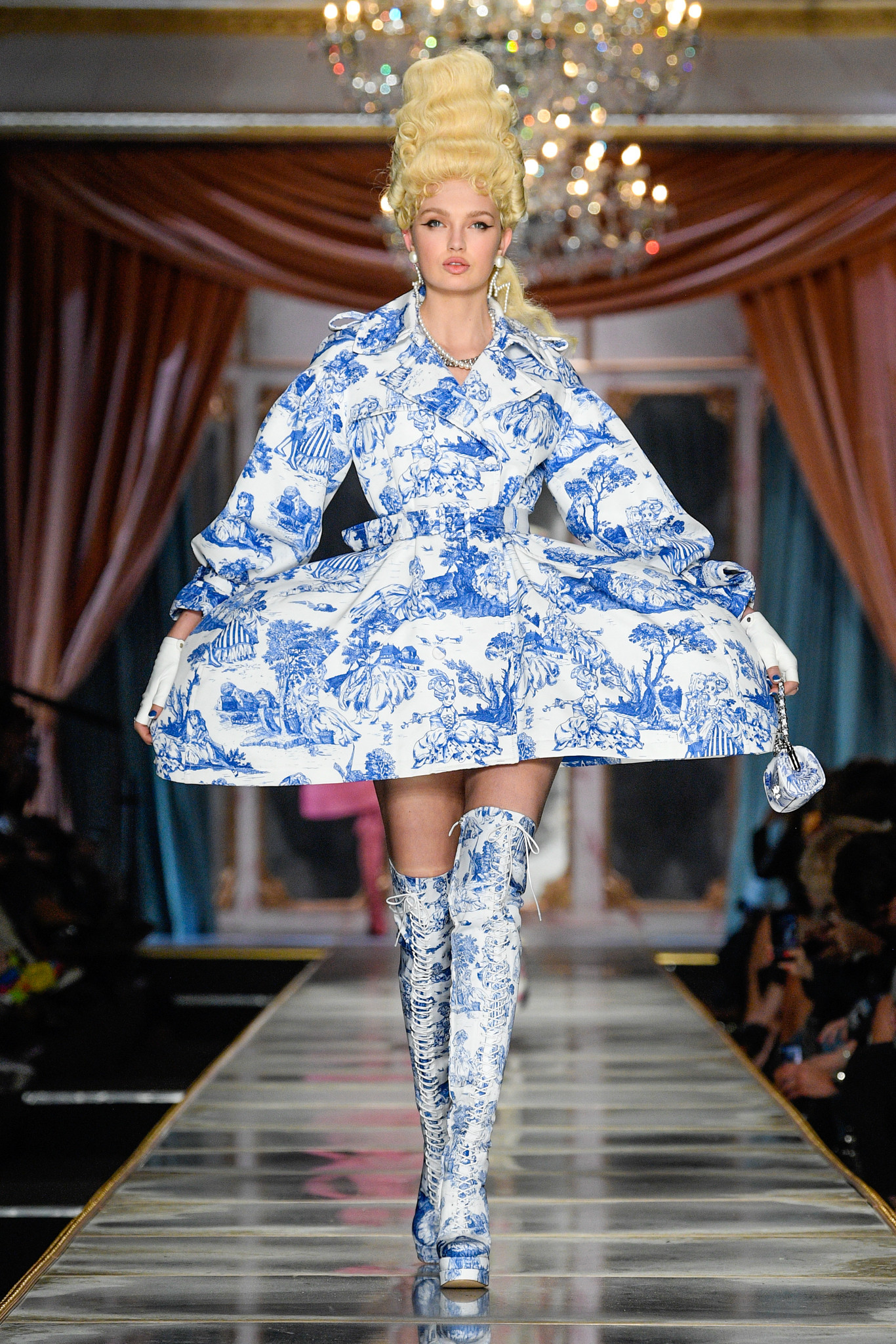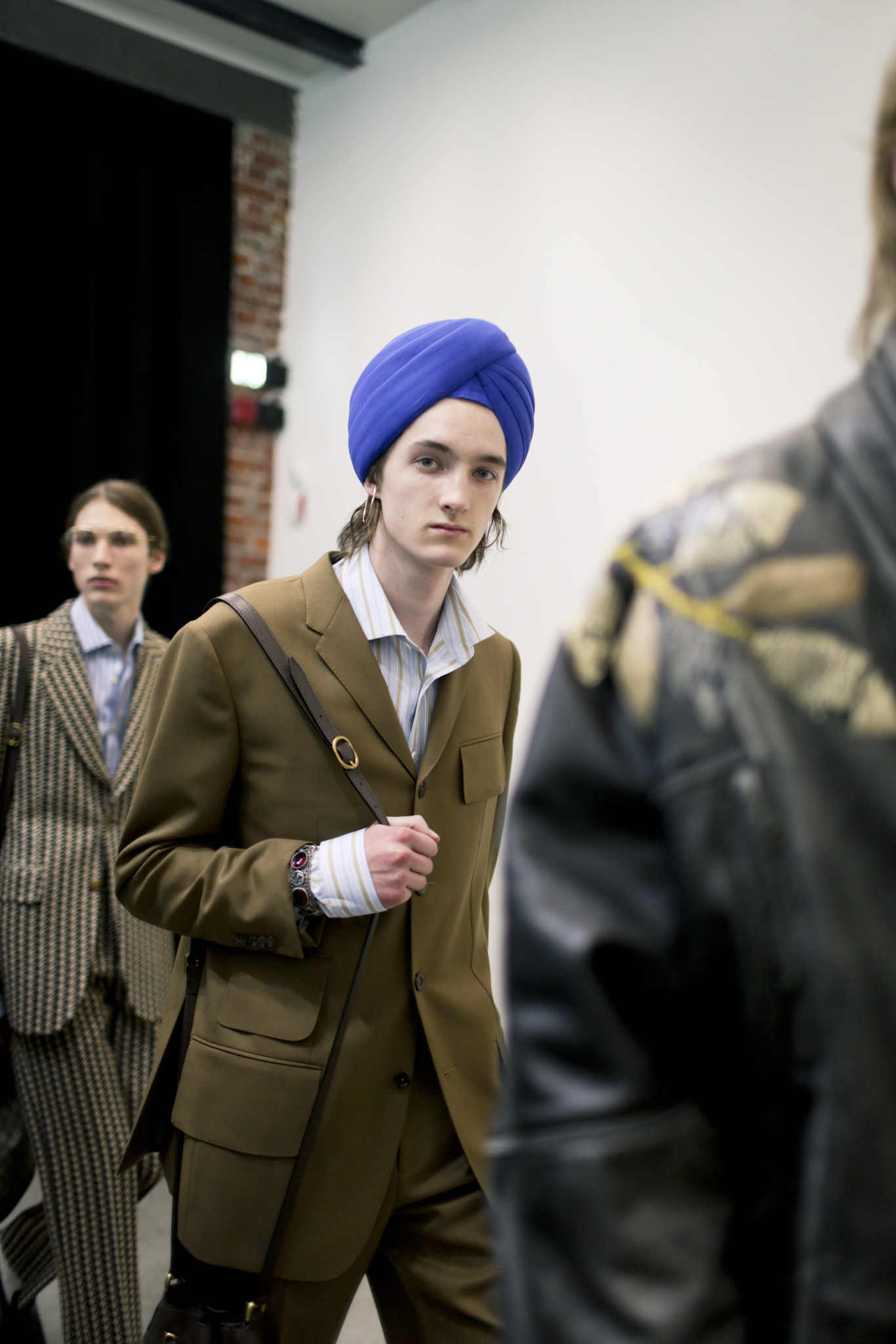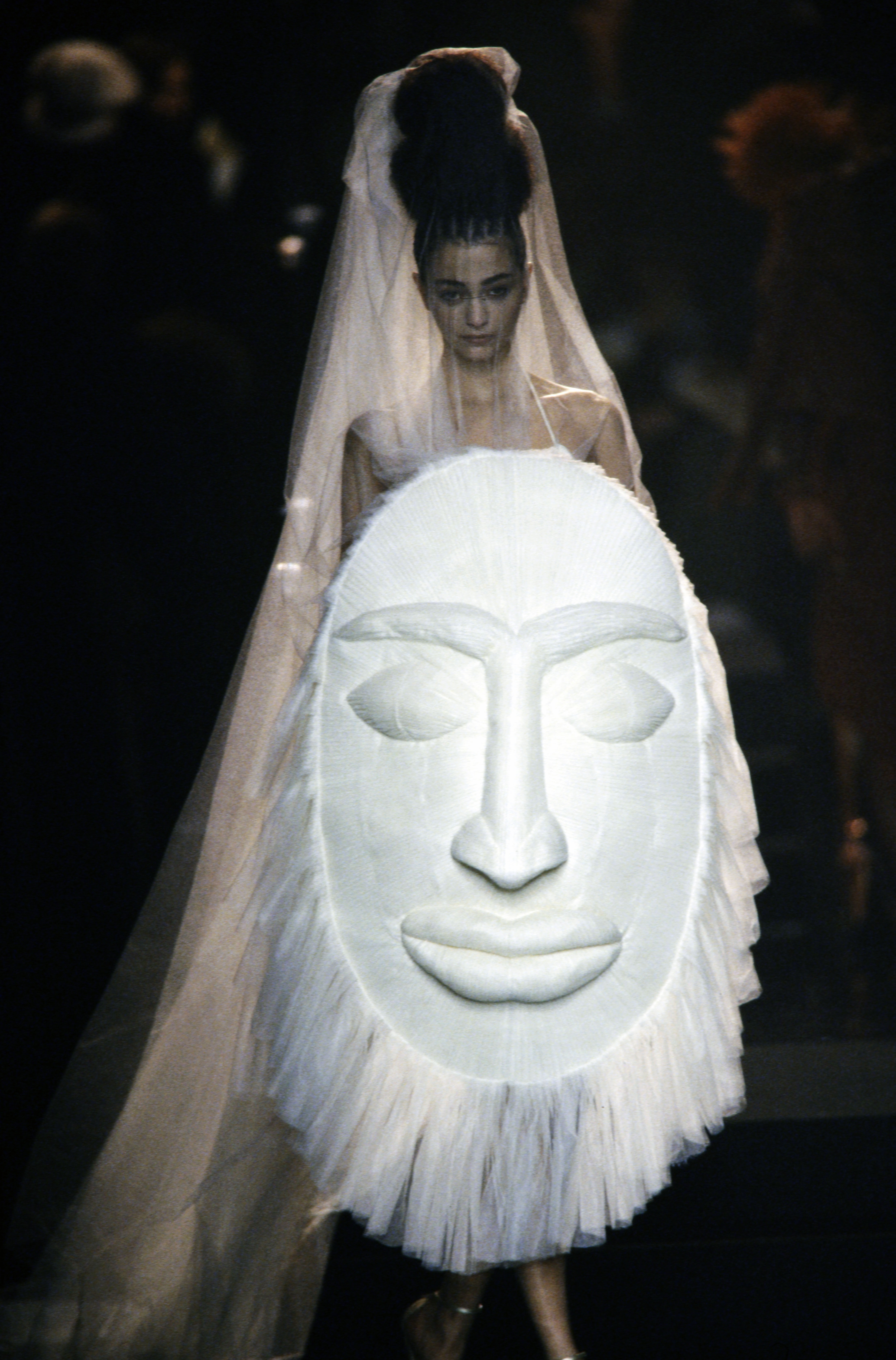Cultural Appropriation In Fashion is a complex topic, especially within men’s style. At mens-fashion.net, we’re here to break down what it is, why it’s important to understand, and how to navigate cultural influences respectfully. Let’s explore how to celebrate cultural diversity in fashion while avoiding cultural insensitivity in your style choices and promoting cultural appreciation.
1. What Exactly is Cultural Appropriation in Men’s Fashion?
Cultural appropriation in men’s fashion involves adopting elements from a culture that is not your own, often without understanding or respecting their original meaning or significance. According to Dr. Benedetta Morsiani, a research fellow at the University of Westminster, it’s “the act through which specificities of a given culture, such as symbols, artifacts, genres, rituals, or technologies, are used by members of a different culture.” It’s vital to recognize that this phenomenon mainly refers to the exploitation of marginalized cultures by more dominant, mainstream cultures. This can manifest in various ways, from using traditional patterns or designs to adopting hairstyles or accessories without acknowledging their origins.
2. Why is Cultural Appropriation Problematic in the Fashion Industry?
Cultural appropriation becomes problematic because it often perpetuates power imbalances and erases the contributions of the original culture. The core issue is that it extracts elements from their original context, potentially distorting or trivializing their meaning. According to Dr. Serkan Delice, a senior lecturer at London College of Fashion, using someone’s culture as inspiration while excluding people of that culture is a form of theft. This is exacerbated when large firms “borrow” designs without crediting the original makers, driven by economic motivations.
For example, designers like Jean Paul Gaultier, Donna Karan, and Dolce & Gabbana have drawn inspiration from African fashion, but their collections received worldwide attention while African designers did not receive the same spotlight.
3. What are Some Examples of Cultural Appropriation in Fashion History?
Throughout fashion history, many instances of cultural borrowing have occurred, sometimes leading to controversy. In the 18th century, royal court dress featured silks fashioned in Asiatic themes, such as the imported Indian Kashmir shawl. Moving into the 20th century, couturiers like Charles Frederick Worth revived Renaissance costume stylings, while innovators like Paul Poiret drew inspiration from Africa, Japan, India, and the Americas, often without crediting the source cultures.
Today, examples include the backlash against Gucci for featuring white models wearing turbans in their fall 2018 runway show.
This sparked outrage because the turban is a religious article of faith for Sikhs, and wearing it as a fashion accessory without understanding its significance was seen as disrespectful.
4. How Can Men Avoid Cultural Appropriation in Their Fashion Choices?
Men can avoid cultural appropriation by educating themselves about the origins and significance of the cultural elements they admire. Start by researching the history and context of the garment, accessory, or style you’re interested in. Support designers and brands from the culture you’re drawing inspiration from. When incorporating elements from another culture, always give credit to the source of inspiration. If you’re unsure, it’s always best to err on the side of caution and avoid potentially offensive choices.
5. What is the Difference Between Cultural Appreciation and Cultural Appropriation?
Cultural appreciation involves learning about and respecting another culture, seeking to understand its traditions and customs. Cultural appropriation, on the other hand, is taking elements from a culture without understanding or respecting their meaning, often for personal gain or without giving credit to the original culture. Appreciation involves engaging with a culture respectfully, while appropriation often involves exploitation.
6. How Does the Fashion Industry Contribute to Cultural Appropriation?
The fashion industry’s top-down system often exacerbates cultural appropriation. Luxury brands and fashion houses have more power to push global acceptance of cultural motifs, materials, or styles, often without giving credit to the communities or heritage they draw from. According to Tanveer Ahmed, a Ph.D. student at The Open University, many mainstream design approaches decontextualize non-Western design concepts, using them as superficial decorations rather than legitimate sources of fashion knowledge.
7. What Role Does Social Media Play in Addressing Cultural Appropriation?
Social media has become a powerful tool for calling out instances of cultural appropriation and raising awareness about the issue. It allows marginalized communities to voice their concerns and demand accountability from brands and designers. The younger generation is more aware and vocal about cultural appropriation due to the cultural diversity in metropolises and their awareness of the lack of representation for specific groups of people.
8. How Can Brands and Designers Promote Cultural Appreciation Instead of Appropriation?
Brands and designers can promote cultural appreciation by collaborating with artisans and designers from the cultures they are inspired by. This ensures that the original creators are involved in the design process and receive proper recognition and compensation. According to Eulanda Sanders, department chair at Iowa State University, crediting sources of inspiration is essential, and the translation must honor and exhibit an understanding of the original source.
9. Why is Diversity and Representation Important in Fashion?
Diversity and representation are crucial in fashion to ensure that different cultures are accurately and respectfully represented. Lack of diversity in the workplace, c-suite, and on the runways has generated greater debate about the racial dynamics in the industry. Matthew Yokobosky, senior curator at the Brooklyn Museum, notes that the conversation surrounding cultural appropriation has stretched beyond art to large corporations benefiting from borrowing ideas and motifs.
10. How Can Consumers Make More Ethical Fashion Choices?
Consumers can make more ethical fashion choices by supporting brands that prioritize fair labor practices, use sustainable materials, and promote cultural appreciation. Look for brands that collaborate with artisans from marginalized communities and give credit to the cultures they draw inspiration from. By being mindful of your purchasing decisions, you can contribute to a more equitable and respectful fashion industry.
11. What Are Some Examples of Successful Cultural Collaborations in Fashion?
Successful cultural collaborations in fashion involve partnerships between designers and artisans from different cultural backgrounds, where both parties are treated with respect and their contributions are valued. These collaborations often result in unique and innovative designs that celebrate cultural diversity and promote understanding.
12. How Does Cultural Appropriation Relate to Racial Capitalism?
Cultural appropriation is closely tied to racial capitalism, which involves gaining social and economic value from a racial identity that is not your own. Dr. Serkan Delice addresses the concept of racial capitalism, noting that both designers and garment workers suffer from fashion’s transnational inequalities, highlighting the need for global solidarity against it. This often results in marginalized communities being excluded from the benefits of their own cultural heritage.
13. What are the Long-Term Effects of Cultural Appropriation on Marginalized Communities?
The long-term effects of cultural appropriation on marginalized communities can be significant. It can lead to the erasure of their cultural identity, the loss of economic opportunities, and the perpetuation of stereotypes. By understanding and addressing cultural appropriation, we can work towards a more equitable and respectful society.
14. How Can Fashion Education Address the Issue of Cultural Appropriation?
Fashion education plays a crucial role in addressing cultural appropriation by teaching students about the history and significance of different cultural traditions. According to Delice, teaching textile history from a social justice lens is important. Educators should encourage students to engage with other cultures respectfully and to consider the ethical implications of their design choices.
15. What is the Future of Cultural Exchange in Fashion?
The future of cultural exchange in fashion should be based on mutual respect, collaboration, and understanding. By prioritizing ethical practices and giving credit to the cultures they draw inspiration from, the fashion industry can create a more inclusive and equitable environment. This involves valuing the contributions of all cultures and ensuring that marginalized communities benefit from the success of their cultural heritage.
2. Understanding the Nuances of Cultural Appropriation in Menswear
In menswear, cultural appropriation isn’t always black and white. It often exists in a gray area where admiration and respect can quickly turn into misrepresentation. Understanding these nuances is critical for any man looking to express his style confidently and ethically. We at mens-fashion.net believe that fashion should be a celebration of global diversity, not a source of cultural harm.
2.1. Deconstructing the Definition: What Does it Mean in Practice?
Cultural appropriation in menswear isn’t just about wearing a specific garment or accessory; it’s about the context and intent behind it. It involves taking elements from a culture that isn’t your own without properly understanding or acknowledging their original meaning. This can involve:
- Wearing traditional garments or accessories as mere fashion statements.
- Profiting from cultural designs without compensating or crediting the original creators.
- Perpetuating stereotypes or misrepresenting cultural practices.
- Ignoring the historical or social significance of cultural items.
2.2. The Power Imbalance: Why is it Harmful?
The harm in cultural appropriation stems from the power imbalance between dominant and marginalized cultures. When a dominant culture adopts elements from a marginalized one without permission or understanding, it can:
- Trivialize the cultural significance of those elements.
- Erase the contributions of the original culture.
- Profit from the culture’s heritage without giving back.
- Reinforce stereotypes and perpetuate discrimination.
2.3. Case Studies: High-Profile Menswear Mishaps
Several high-profile cases of cultural appropriation in menswear have sparked controversy and debate. These examples highlight the importance of cultural sensitivity and the potential consequences of missteps:
| Brand/Designer | Offense | Consequence |
|---|---|---|
| Gucci | Featuring turbans on white models | Backlash from the Sikh community, apology from Gucci, product withdrawal |
| Marc Jacobs | Using dreadlocks on white models | Criticism for cultural insensitivity, debate about hair and identity |
| Various | “Tribal” prints without cultural context | Accusations of exoticism and disrespect, calls for greater representation |



2.4. The Intent vs. Impact Dilemma: Why Good Intentions Aren’t Enough
Even with good intentions, menswear designers and consumers can still commit cultural appropriation. The intent behind wearing or using a cultural item doesn’t negate the potential harm it can cause. It’s crucial to consider the impact of your actions on the culture you’re borrowing from, regardless of your intentions.
3. How to Navigate Cultural Influences in Men’s Fashion Respectfully
Navigating cultural influences in menswear requires a conscious effort to learn, respect, and engage with different cultures in a meaningful way. It’s about celebrating diversity while avoiding cultural appropriation and promoting cross-cultural understanding.
3.1. Educate Yourself: Understanding Cultural Context
The first step in navigating cultural influences respectfully is to educate yourself about the cultures you’re interested in. This involves:
- Reading books, articles, and blogs about the culture’s history, traditions, and values.
- Watching documentaries and films that offer authentic perspectives.
- Listening to music and podcasts that showcase the culture’s artistic expressions.
- Engaging with members of the culture and learning from their experiences.
3.2. Seek Authentic Sources: Supporting Indigenous Creators
When incorporating cultural elements into your menswear style, seek out authentic sources and support indigenous creators. This means:
- Buying from designers and brands that are owned and operated by members of the culture.
- Purchasing handcrafted items directly from artisans in the culture.
- Supporting organizations that promote cultural preservation and economic empowerment.
3.3. Give Credit Where It’s Due: Acknowledging Inspiration
Always give credit to the cultures that inspire your menswear style. This can involve:
- Mentioning the cultural origin of a garment or accessory when you wear it.
- Tagging the designer or artisan who created the item on social media.
- Sharing information about the culture’s history and significance.
- Using your platform to promote cultural understanding and appreciation.
3.4. Ask for Guidance: Consulting with Cultural Representatives
If you’re unsure whether a particular menswear choice is culturally appropriate, ask for guidance from cultural representatives. This can involve:
- Reaching out to cultural organizations or community leaders.
- Consulting with fashion experts who specialize in cultural sensitivity.
- Participating in cultural exchange programs or workshops.
- Being open to feedback and willing to learn from your mistakes.
3.5. Respectful Adaptation vs. Appropriation: Finding the Balance
The key to navigating cultural influences in menswear is to find the balance between respectful adaptation and appropriation. This means:
- Adapting cultural elements in a way that honors their original meaning and significance.
- Avoiding the use of cultural elements in a way that is disrespectful, trivializing, or exploitative.
- Being mindful of the potential impact of your menswear choices on the culture you’re borrowing from.
- Prioritizing cultural understanding and appreciation over personal gain or fashion trends.
4. The Role of Brands in Promoting Cultural Sensitivity
Brands play a crucial role in promoting cultural sensitivity in the menswear industry. By adopting ethical practices and promoting cultural understanding, they can help create a more inclusive and respectful fashion landscape.
4.1. Ethical Sourcing and Production: Ensuring Fair Labor Practices
Brands should prioritize ethical sourcing and production practices, ensuring fair labor standards for all workers involved in the creation of their menswear products. This means:
- Paying fair wages and providing safe working conditions.
- Avoiding the use of child labor or forced labor.
- Respecting the cultural rights of workers and communities.
- Promoting sustainable and environmentally responsible practices.
4.2. Collaboration with Cultural Communities: Empowering Indigenous Voices
Brands should collaborate with cultural communities, empowering indigenous voices and promoting cultural preservation. This can involve:
- Partnering with indigenous designers and artisans to create unique menswear collections.
- Supporting cultural exchange programs and educational initiatives.
- Investing in community development projects and economic empowerment programs.
- Giving indigenous communities a seat at the table and respecting their perspectives.
4.3. Accurate Representation in Marketing: Avoiding Stereotypes
Brands should strive for accurate representation in their marketing campaigns, avoiding stereotypes and promoting cultural diversity. This means:
- Featuring models from diverse ethnic backgrounds and body types.
- Avoiding the use of cultural imagery in a way that is disrespectful or exploitative.
- Promoting cultural understanding and appreciation through their marketing messages.
- Being mindful of the potential impact of their marketing campaigns on different cultural groups.
4.4. Transparency and Accountability: Openly Addressing Concerns
Brands should be transparent and accountable, openly addressing concerns about cultural appropriation and taking responsibility for their actions. This means:
- Having a clear policy on cultural appropriation and ethical sourcing.
- Responding promptly and respectfully to complaints or concerns.
- Taking corrective action when necessary and learning from their mistakes.
- Being open to feedback and willing to engage in dialogue with cultural communities.
5. Mens-Fashion.net: Your Guide to Culturally Conscious Style
At mens-fashion.net, we’re committed to promoting culturally conscious style in the menswear industry. We believe that fashion should be a force for good, celebrating diversity, promoting understanding, and empowering communities.
5.1. Curated Content: Showcasing Diverse Styles
We curate content that showcases diverse menswear styles from around the world, highlighting the beauty and richness of different cultures. This includes:
- Featuring designers and brands that prioritize ethical practices and cultural sensitivity.
- Sharing stories about cultural traditions and their influence on menswear.
- Providing tips on how to incorporate cultural elements into your style respectfully.
- Promoting cultural understanding and appreciation through our editorial content.
5.2. Expert Advice: Navigating Cultural Sensitivities
We offer expert advice on navigating cultural sensitivities in menswear, helping you make informed and ethical style choices. This includes:
- Providing guidance on how to research and understand cultural context.
- Offering tips on how to support indigenous creators and ethical brands.
- Providing insights on how to give credit where it’s due and avoid cultural appropriation.
- Facilitating dialogue and discussion about cultural issues in menswear.
5.3. Community Engagement: Fostering Dialogue
We foster community engagement, creating a space for open and respectful dialogue about cultural issues in menswear. This includes:
- Encouraging readers to share their perspectives and experiences.
- Hosting Q&A sessions with cultural experts and designers.
- Organizing events and workshops that promote cultural understanding.
- Creating a supportive and inclusive community for menswear enthusiasts.
5.4. Resources and Recommendations: Further Learning
We provide resources and recommendations for further learning, helping you deepen your understanding of cultural issues in menswear. This includes:
- Linking to books, articles, and websites that offer valuable insights.
- Recommending documentaries and films that showcase cultural perspectives.
- Providing a list of cultural organizations and resources.
- Encouraging you to continue your journey of cultural discovery and appreciation.
6. The Future of Menswear: Inclusivity, Respect, and Collaboration
The future of menswear lies in inclusivity, respect, and collaboration. By embracing cultural diversity and promoting ethical practices, the industry can create a more equitable and sustainable fashion landscape.
6.1. Embracing Global Influences: A Fusion of Styles
The menswear industry should embrace global influences, celebrating the fusion of styles and cultures. This means:
- Drawing inspiration from diverse sources while respecting cultural boundaries.
- Collaborating with designers and artisans from around the world.
- Creating menswear collections that reflect the richness and complexity of human culture.
- Promoting cultural exchange and understanding through fashion.
6.2. Empowering Marginalized Communities: Economic Opportunities
The menswear industry should empower marginalized communities, providing economic opportunities and promoting social justice. This means:
- Investing in community development projects and economic empowerment programs.
- Supporting fair labor practices and ethical sourcing.
- Providing access to education and training for marginalized communities.
- Giving marginalized communities a seat at the table and respecting their voices.
6.3. Promoting Cultural Understanding: Education and Awareness
The menswear industry should promote cultural understanding, raising awareness about cultural issues and educating consumers about ethical fashion choices. This means:
- Creating educational campaigns and resources that promote cultural sensitivity.
- Partnering with cultural organizations and community leaders to raise awareness.
- Using their platforms to amplify the voices of marginalized communities.
- Promoting cultural understanding and appreciation through their marketing messages.
6.4. Leading by Example: Setting a New Standard
The menswear industry should lead by example, setting a new standard for ethical and culturally conscious fashion. This means:
- Adopting transparent and accountable business practices.
- Collaborating with cultural communities to promote cultural preservation.
- Investing in sustainable and environmentally responsible practices.
- Creating a fashion industry that is inclusive, respectful, and empowering for all.
6.5. Join the Movement: Cultivating Change
At mens-fashion.net, we invite you to join the movement towards a more culturally conscious and ethical menswear industry. Together, we can cultivate change and create a fashion landscape that celebrates diversity, promotes understanding, and empowers communities.
Ready to take the next step? Explore mens-fashion.net for the latest trends, styling tips, and ethical brand recommendations to elevate your wardrobe while staying culturally sensitive.
7. FAQ on Cultural Appropriation in Men’s Fashion
- What should men do if they accidentally commit cultural appropriation?
- If you accidentally commit cultural appropriation, the most important thing is to apologize sincerely and learn from your mistake. Acknowledge the harm you caused, educate yourself on the cultural significance of the item, and avoid making the same mistake in the future.
- Are there any specific items of clothing men should always avoid wearing due to cultural appropriation concerns?
- Certain items, like Native American headdresses or religious garments from cultures you don’t belong to, should generally be avoided unless you have a legitimate connection to the culture and permission to wear them. Always research the item’s history and significance before wearing it.
- How can men respectfully incorporate indigenous patterns or textiles into their wardrobe?
- To respectfully incorporate indigenous patterns or textiles, purchase directly from indigenous artisans or brands that collaborate ethically with indigenous communities. Always credit the source of your inspiration and educate yourself on the meaning behind the patterns.
- What is the difference between cultural exchange and cultural appropriation in men’s fashion?
- Cultural exchange involves a mutual exchange of ideas and traditions between cultures, with respect and understanding. Cultural appropriation, on the other hand, involves taking elements from a culture without permission or understanding, often for personal gain.
- How can mens-fashion.net help men make better, more informed fashion choices?
- Mens-fashion.net provides resources, articles, and recommendations to help men make informed fashion choices. We highlight ethical brands, offer advice on cultural sensitivity, and promote diversity and inclusivity in the menswear industry. Visit mens-fashion.net to explore our content and learn more.
- What are some resources for learning more about cultural appreciation vs. appropriation?
- Numerous resources can help you learn more about cultural appreciation vs. appropriation. Look for books, documentaries, and articles that discuss the history and significance of different cultural traditions. Also, follow social media accounts and organizations that promote cultural understanding and ethical fashion practices.
- How does cultural appropriation affect the fashion industry’s diversity and inclusion efforts?
- Cultural appropriation can undermine diversity and inclusion efforts by perpetuating power imbalances and erasing the contributions of marginalized cultures. By addressing cultural appropriation and promoting ethical practices, the fashion industry can create a more inclusive and equitable environment for all.
- What steps can men take to support cultural communities when engaging with their fashion traditions?
- To support cultural communities, purchase directly from artisans and brands owned by members of those communities. Donate to organizations that promote cultural preservation and economic empowerment. Use your platform to raise awareness about cultural issues and advocate for ethical fashion practices.
- How does the rise of social media impact the conversation around cultural appropriation in menswear?
- Social media has amplified the conversation around cultural appropriation, allowing marginalized communities to voice their concerns and demand accountability from brands and individuals. It has also created a platform for education and awareness, helping people learn about cultural sensitivity and ethical fashion practices.
- What role do consumers play in holding brands accountable for cultural appropriation in their menswear lines?
- Consumers play a crucial role in holding brands accountable for cultural appropriation. By refusing to support brands that engage in unethical practices and demanding transparency and accountability, consumers can encourage the fashion industry to adopt more culturally sensitive and ethical practices.
Remember, fashion is a powerful form of self-expression, and by making informed and ethical choices, you can use your style to celebrate diversity and promote understanding. Visit mens-fashion.net for more insights and inspiration on creating a culturally conscious wardrobe. Our address is 227 W 27th St, New York, NY 10001, United States, and you can reach us at +1 (212) 217-5800.
